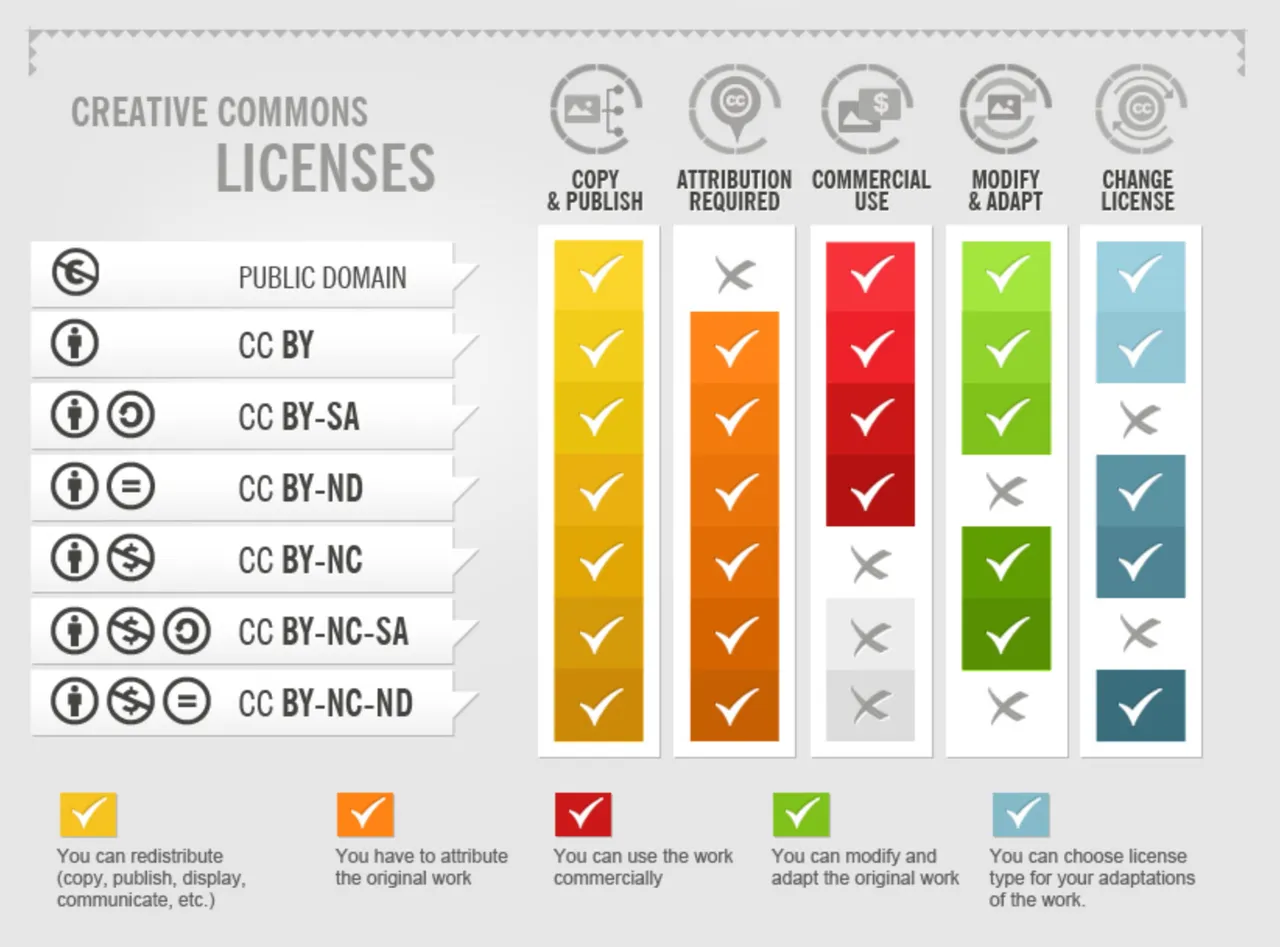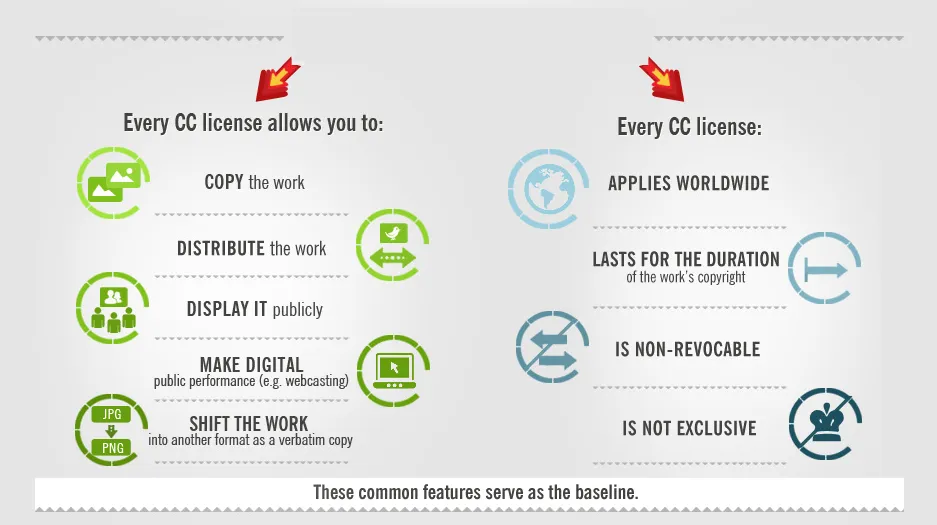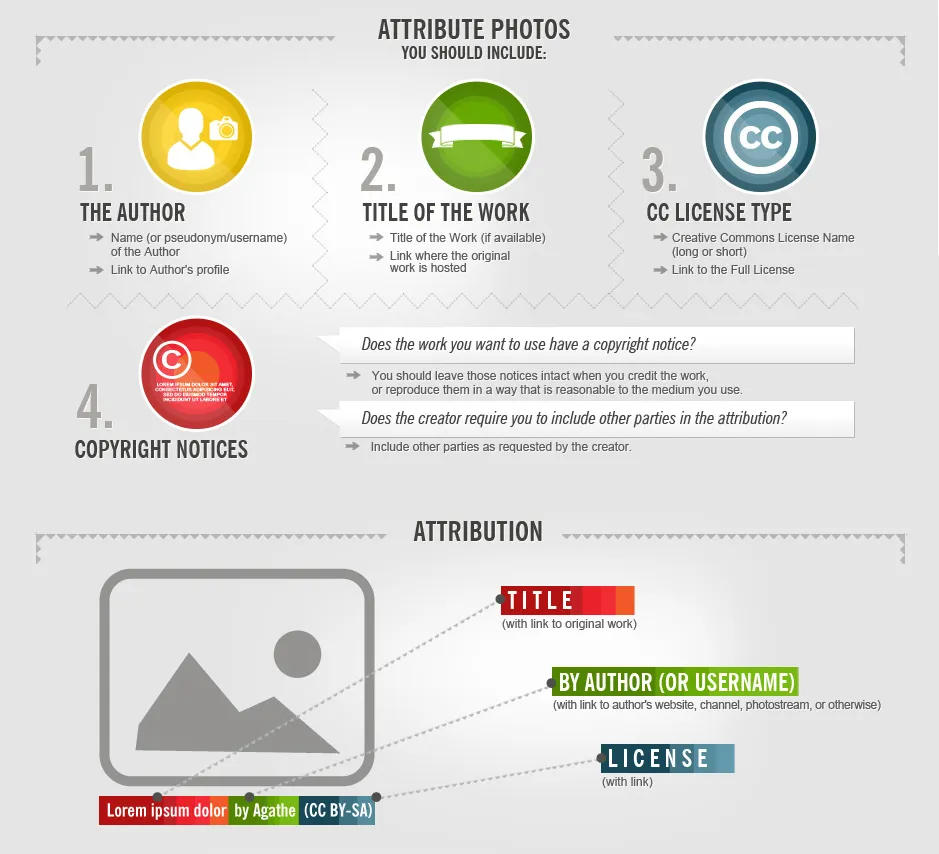Dear Content Creators,
I've been running the @creative-commons account since a while, because I wanted to support an open society, in which creativity won't be limited through restrictive copyright-laws.
Just like @utopian-io, who is supporting people, that are contributing to opensource projects, I wanted to reward people, that are contributing to the creative commons.
This way, I wanted to create an incentive to make more and more creative works available to the community and to turn Steemit into a place to go either for people, that are openly sharing their works, or searching for such content.

“Creative Commons Logo” by IvanWalsh.com is licensed under CC BY 2.0
Copyright vs. Commons
Usually, when you create something, the copyright laws of your country automatically apply to the work. For example in Germany, you're not allowed to use, remix or redistribute anyone's work without permission until 70 years after the death of the original creator.
But artists, designers, photographers, filmmakers and musicians are inspired by the works of others since centuries. They often quote their paragons, build on their works and remix different ideas into something new.
Techniques like collage, sampling or mashups won't be possible without using the works of others, but artists, who are using these techniques do often risk legal issues and lawsuits.
Creative Commons and Public Domain create legal certainty for everyone, who wants to use works, that are licensed respectively. But it is important to follow and understand the different meanings of the licenses and follow the rules for using them.
The different CC-licenses
The following infographic gives you an overview of the different CC-licenses:

CC-Infographic by Foter under CC-BY-SA 3.0 license.
For example, the infographic above is created by the owners of a website called Foter, that is sharing CC-licensed photography. CC-BY-SA means, that you have to mention them, whenever you use their infographic and that you cannot change the license to make it copyrighted again. But you're free to copy and publish the graphic (even commercially), as well as modify and adapt it.
Here are some basic features of every creative commons license, that you should also keep in mind:

CC-Infographic by Foter under CC-BY-SA 3.0 license.
How to give correct attribution?
As every license, but Public Domain (also called CC0), requires appropriate attribution to the original creator, it is also neccessary to mention the original license (and link to it, when possible).

CC-Infographic by Foter under CC-BY-SA 3.0 license.
It is preferred to place the attribution info right below the work, you're licensing, but it is still ok to place it at the bottom of your post.
What's in for you?
Now, that you know about the different creative commons licenses and how to use the correctly, you still might ask yourself, why you should consider to make your works available under one of those licenses.
Besides offering your works to the communtiy and being mentioned everytime, someone is using your work, there are quite a few initiatives at Steemit, that will notice your contribution to the commons and eventually give you some rewards or even a resteem.
Creative Commons Initiatives
Slothicorn
One of the first users, that pushed the use of creative commons content on steemit has been long time steemian and celebrity @stellabelle, who started an creative commons crypto-art initiative called @slothicorn. There are some human curators, who will check posts, that are related to #crypto-art and #slothicorn and eventually give you an upvote or resteem. Stella also quite often shares the best works at her twitter, which gives your work even more exposure.
The sloth image is licensed by @overkillcoin under a CC-BY 4.0 International license.
Although she recently decided to let the artist choose, if he/she wants to publish under creative commons, it is still a project, that is closely related to creative commons.
You should definitely check out this guidelines post or join the Slothicorn Discord, before you plan to contribute to this initiative.
ccommons.art
Another account, that is rewarding authors for contributing to the commons, is the @ccommons.art account run by @alexandravart. She is an artist from Bucharest and is doing a weekly "Wall of Fame" post, where she collects to best creative commons works on Steemit and shares the rewards of those posts with all the mentioned artists.
creative-commons
Last, but not least, my @creative-commons account, who got some SP by a generous donation of @anonymous.donor and also some delegation by myself. I started to manually curate all content, that has been tagged #creativecommons or #creative-commons a while ago, but temporarily also ran a FossBot instance to automatically vote related content.
I also created a Steemauto trail and followed the votes of this account with some percentage, so that it even got more weight.
Unfortunately it didn't take much time, until some people started to tag their posts with #creative-commons without adding creative commons licenses and content to it. They even started to tag me, because they thought, I'm kind of a free voting bot.
Instead of finding quality CC-content, you will just see a lot of copy/paste or otherwise copyrighted material, when you look for new creativecommons or creative-commons posts.
Steemitri the Mannequin by @steemitri licensed under CC-BY-NC-ND.
Flagging unrelated posts
So I decided to stop using a bot for curation CC-content and started to leave messages instead, telling everybody to remove the #creative-commons tag, if their post has nothing to do with the topic or doesn't contain CC-content.
Only just a few people even reacted to my friendly comments regarding this issue, so from now on I will start to flag "intentionally miscategorized" posts until everybody gets it.
As long as we don't have communities and a better search function, tags are the only way to easily find valuable creative commons content on Steemit.
TL;DR
Sharing Creative Commons content on Steemit is a win-win situation, because the community can find and use good content to use or build upon, while creators will not only receive a mention, but also some decent upvotes by certain accounts, that support the commons.
But you should definitely learn, how to use the different CC-licenses and how to give appropiate credit to the original creator.
You have to add a CC-license to your post or your post has to discuss the topic in general, when you use the #creativecommons or #creative-commons tags!
If you try to trick or abuse the creative commons related tags, you will most likely run into trouble and risk a flag.
Please check the complete steemit etiquette guide for more infos about common rules on Steemit.
If you want to support my @creative-commons initiative, you can do so by following my votes on Steemauto or by delegating some spare SP.
Thanks for reading and have fun sharing your creativity!
@shortcut - art, creativity and commons

creativity is based on freedom


